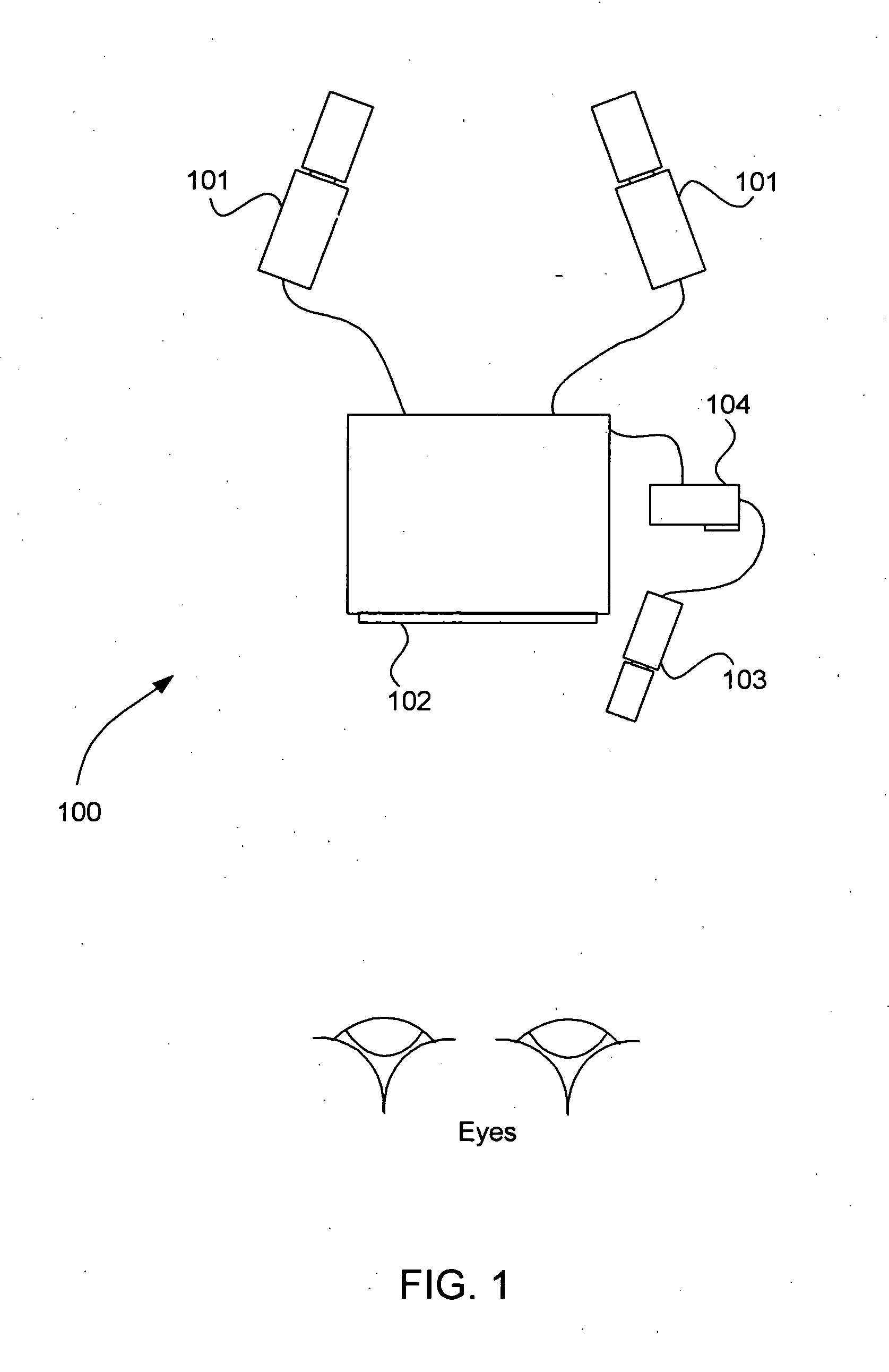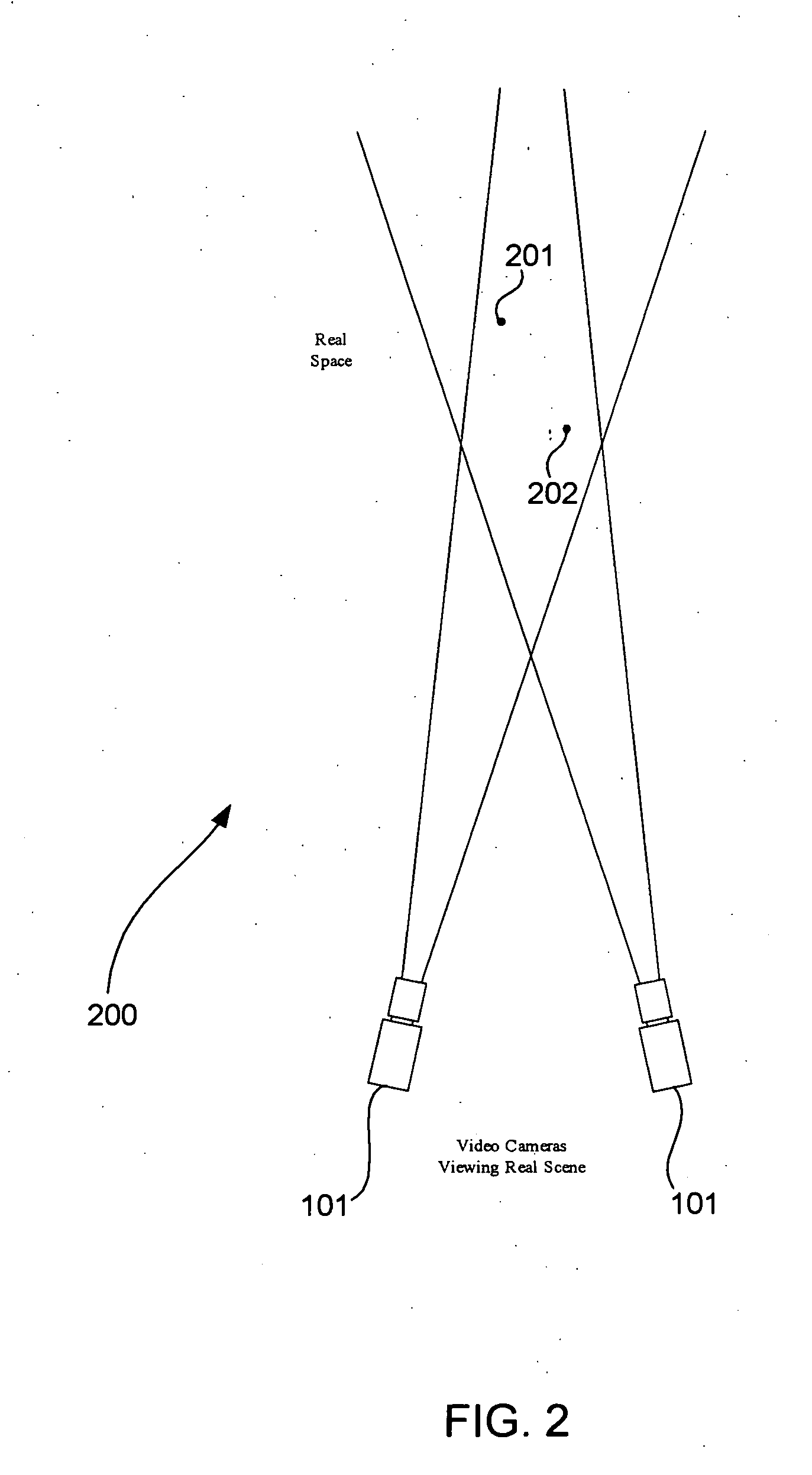Systems and methods for eye-operated three-dimensional object location
a three-dimensional object and eye-operated technology, applied in the field of systems and methods for determining the three-dimensional location of objects, can solve the problems of only two-dimensional presentation, no natural means for exporting this information to the outside world, and the observer cannot see in the third dimension
- Summary
- Abstract
- Description
- Claims
- Application Information
AI Technical Summary
Benefits of technology
Problems solved by technology
Method used
Image
Examples
Embodiment Construction
[0016] It has long been known that the angular orientation of the optical axis of the eye can be measured remotely by the corneal reflection method. The method takes advantage of the eye's properties that the cornea is approximately spherical over about a 35 to 45 degree cone around the eye's optic axis, and the relative locations of the pupil and a reflection of light from the cornea change in proportion to eye rotation. The corneal reflection method for determining the orientation of the eye is described in U.S. Pat. No. 3,864,030, for example, which is incorporated by reference herein.
[0017] Generally, systems used to measure angular orientation of the optical axis of the eye by the corneal reflection method include a camera to observe the eye, a light source to illuminate the eye, and a processor to perform image processing and mathematical computations. An exemplary system employing the corneal reflection method is described in U.S. Pat. No. 5,231,674 (hereinafter the “'674 pa...
PUM
 Login to View More
Login to View More Abstract
Description
Claims
Application Information
 Login to View More
Login to View More - R&D
- Intellectual Property
- Life Sciences
- Materials
- Tech Scout
- Unparalleled Data Quality
- Higher Quality Content
- 60% Fewer Hallucinations
Browse by: Latest US Patents, China's latest patents, Technical Efficacy Thesaurus, Application Domain, Technology Topic, Popular Technical Reports.
© 2025 PatSnap. All rights reserved.Legal|Privacy policy|Modern Slavery Act Transparency Statement|Sitemap|About US| Contact US: help@patsnap.com



